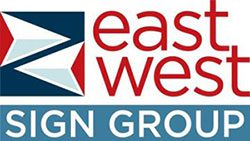Many cities and counties throughout the United States have signage regulations that specifically govern the design, use and installation of LED message centers (aka Electronic Message Centers or EMCs). While the permit process and rules will vary based on where your business is located, here are some of the things you should be aware of about the LED message center sign permit process.
Sign Regulations
Sign regulations, while seeming like a nuisance sometimes, are designed to prevent signs from becoming just that. Sign regulations preserve property values, limit traffic hazards, maintain the original atmosphere of a neighborhood and keep pedestrians and drivers safe. Sign regulations also limit light pollution and protect the surrounding environment as much as possible. The strictest regulations are typically found in neighborhood commercial districts, historic districts and locations right next to residential neighborhoods. Both sign manufacturers and owners need to comply with rules, or there can be fines (or worse).
6 Things You Should Know About LED message center Sign Permits
- Before you start planning your LED message center you should look up your property’s zoning district and determine which governmental office handles sign code in your area. If your city or county has a website, there should be information listed about zoning, development or land use. If you need additional help, you can work with your sign designer to determine what rules you need to follow.
- Know the many names that municipalities can use to refer to LED signs. LED signs can be described using any of the following terms: electronic message centers, electronic changeable copy signs, LED message centers, electronic marquees, scrolling message centers, scrolling signs and electronic billboards. If you need clarification on a specific term used, you can contact your city or county for additional information. It’s always better to ask than to spend a great deal on a sign you cannot use!
- When looking at the allowable surface area calculation, pay extra attention to any rules about what percentage of the sign face can be used for a digital display. Some cities allow a portion to be digital but restrict it to only a small amount of the actual sign.
- Be as thorough as you can when applying for an LED message center sign permit. The more information that you can offer, the more likely the city will be to approve the application. In general, you should expect to provide a rendering of the sign, photographs of the site that the sign will be installed, the dimensions of the sign (height and length) and the name and contact information of the company that will be performing the installation. If you can provide information about how a wall sign would be attached or the distance from your sign to the right-of-way, that would also be helpful for the approving authority.
- The jurisdiction your business is located in might restrict how many times a day the content on your electronic message center can change. Some municipalities give a time limit (15 seconds minimum per message), while others will limit changes to a maximum of 4 per 24-hour period. Limits are also often placed on what can be displayed. These are often targeted at moving content or animations, due to the potential for driver distraction.
- Partnering with a professional sign design and installation company is a great idea. East West Sign Group knows how to decipher regulations and adapt your signage dream into a practical and legal reality.
LED Message Center Signs from East West Sign Group
Designing and installing the right business signage can be hard without an experienced partner. East West Sign Group knows all about sign design and installation, and we have worked with countless businesses to boost business with great signage. To learn more about how we can design the right sign for you, contact us today!

